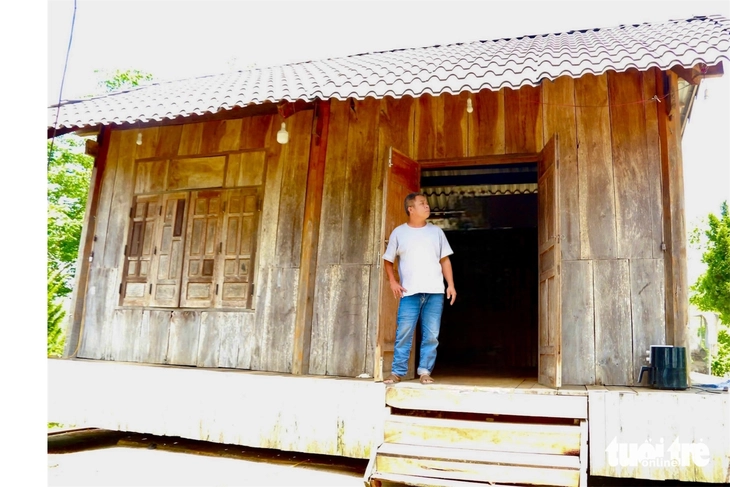
The owner of the self-rotating house is Mr. Pham The Dan (47 years old, residing in Giang Son village, Hoa Hiep commune) who said he has been building it himself for more than 20 years - Photo: MINH PHUONG
On May 13, Mr. Bach Dinh Bac - Vice Chairman of the People's Committee of Hoa Hiep Commune (Cu Kuin District, Dak Lak ) - confirmed that the self-rotating house mentioned above is the only one in the locality, currently attracting many tourists.
Ideas come from the wind
This house is not a modern technology, but a "homegrown" product that Mr. Pham The Dan (47 years old, residing in Giang Son village, Hoa Hiep commune) researched, designed and built nearly 20 years ago.
"The project is highly creative and, if properly invested in, can become an experiential tourism destination," Mr. Bac assessed.
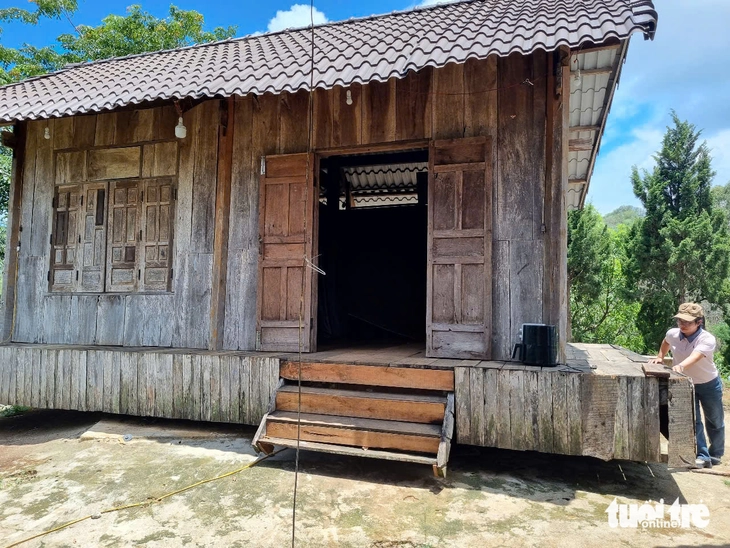
Mr. Dan's rotating house can be powered by electricity or pushed lightly by human power - Photo: MINH PHUONG
Mr. Dan said that when he first settled in the Hoa Hiep hills, he built his house on high ground, where the wind was strong in the dry season and water splashed across in the rainy season. The idea of building a rotating house to avoid the rain and sun started from there.
As a former harvester driver and mechanical repairman, he understood the principle of engine rotation. After about 6 months of brainstorming, he began constructing a solid concrete foundation that could withstand a load of about 30 tons, with a system of bearings, sprockets, and chains underneath. Above, he built an iron frame, made wooden planks, and covered it with light corrugated iron to reduce the load.
The house frame is about 50cm above the ground and is connected to the rotation axis through Y-shaped and V-shaped iron bars. "The house rotates by electricity, but I also installed a hand-pushing mechanism. If there is a power outage, it can still rotate as usual," Mr. Dan informed.
The house has two rooms, total weight about 15 tons. When opening the latches at the four corners, just push lightly with your hand and the whole house slowly rotates.
"When I'm sad, I turn the house to another direction for something different, it's also fun," he said with a laugh.
From skepticism to curiosity, attracting tourists
According to the owner of the self-rotating house, when he completed the house, he bragged to his relatives and neighbors, but most of them did not believe it.
"They said if I could turn it, they would invite me to drink for the whole year. When I turned it to show them, some people thought it was an earthquake and ran outside," he recalled with a laugh.
After that, many curious people came to see for themselves, some even offered to learn how to do it. However, Mr. Dan said he had not shared the details because he considered this the result of personal research over many years.
"I'm still looking for ways to improve the ability to make a rotating concrete house, even remotely controlled," he said.
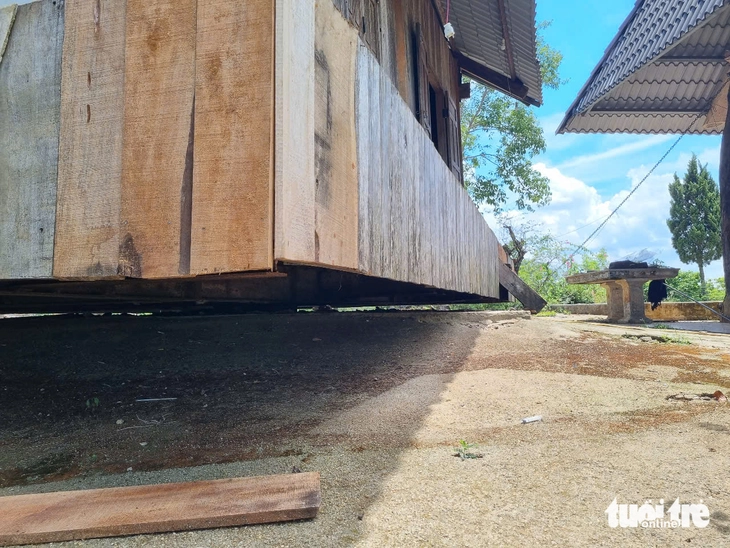
The rotating house has an upper structure made of iron frame, wooden planks, and light corrugated iron roof to reduce the load. The bottom is made of solid concrete that can withstand about 30 tons of force, and operates on a system of bearings, sprockets, and chains - Photo: MINH PHUONG
Ms. Nguyen Thanh Hoai (residing in Buon Ma Thuot City, Dak Lak), one of the people who directly experienced the rotating house, shared: "The feeling of entering this unique wooden house is very interesting. Standing inside the house and seeing it slowly rotating, it is no different from a miniature wonder".
Although it has never been widely advertised, Mr. Dan’s rotating house is still special to the people in the area. Local authorities consider this a project that can be combined with tourism if invested in the right direction.
"The house has a unique design and is highly experiential. If it is supported in renovation and connected to other destinations, it can completely become a tourist highlight for Hoa Hiep," said Mr. Bach Dinh Bac.
Source: https://tuoitre.vn/doc-dao-can-nha-go-co-the-xoay-theo-huong-mong-muon-2025051410023369.htm









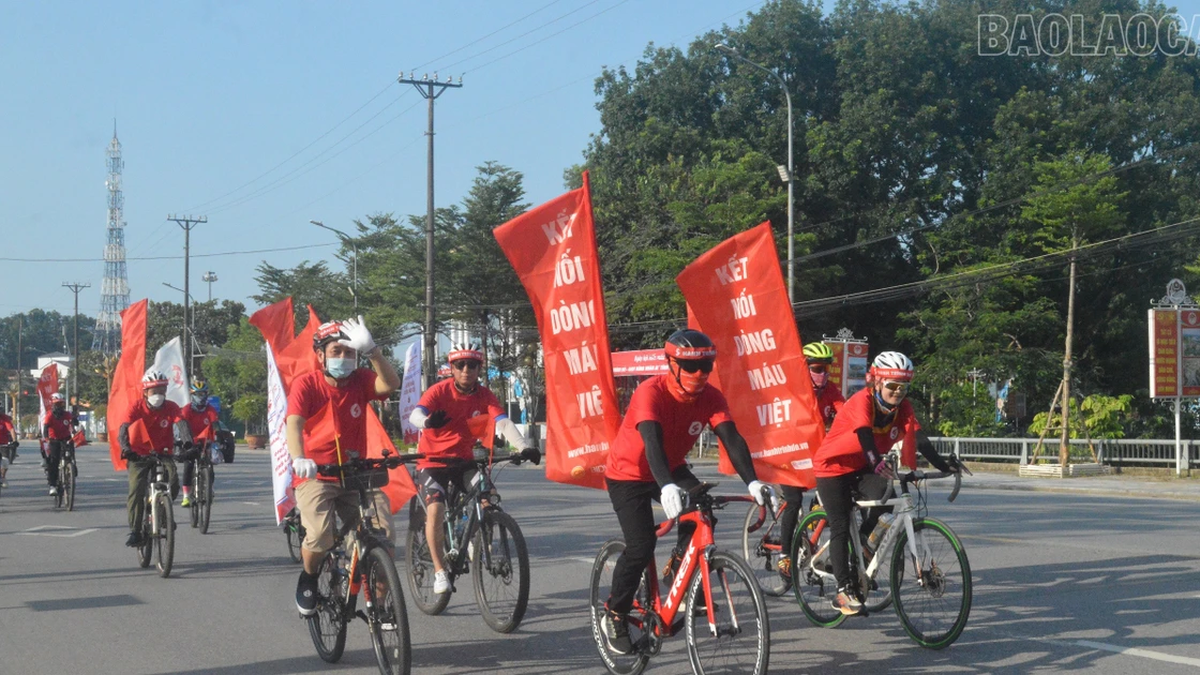
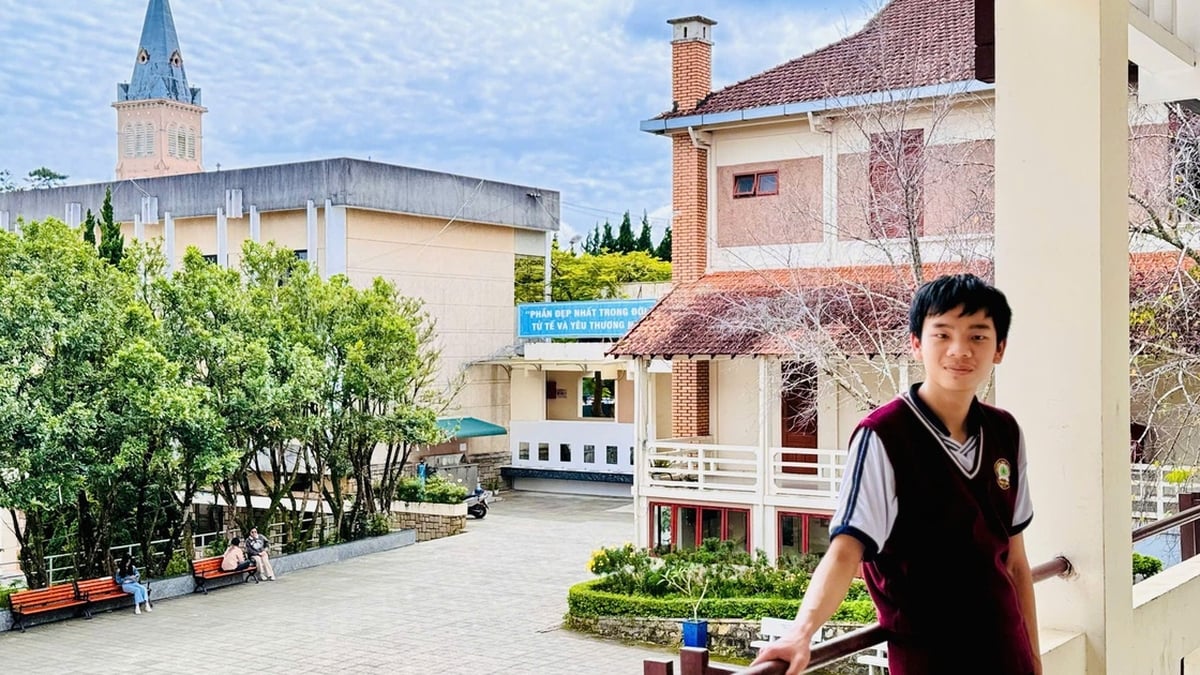






















































































Comment (0)